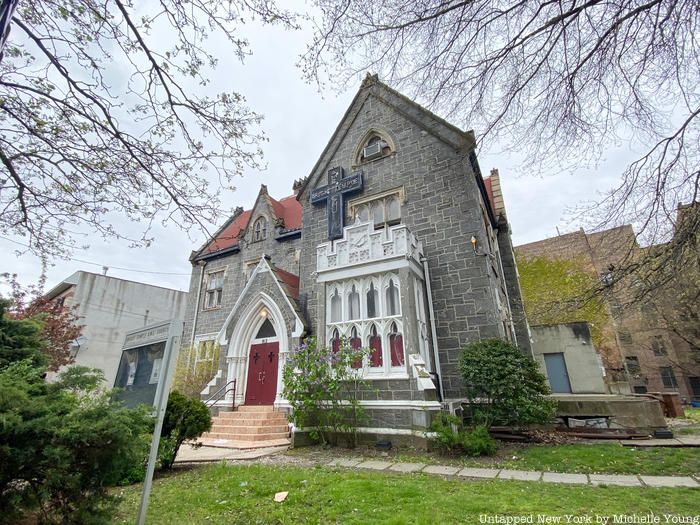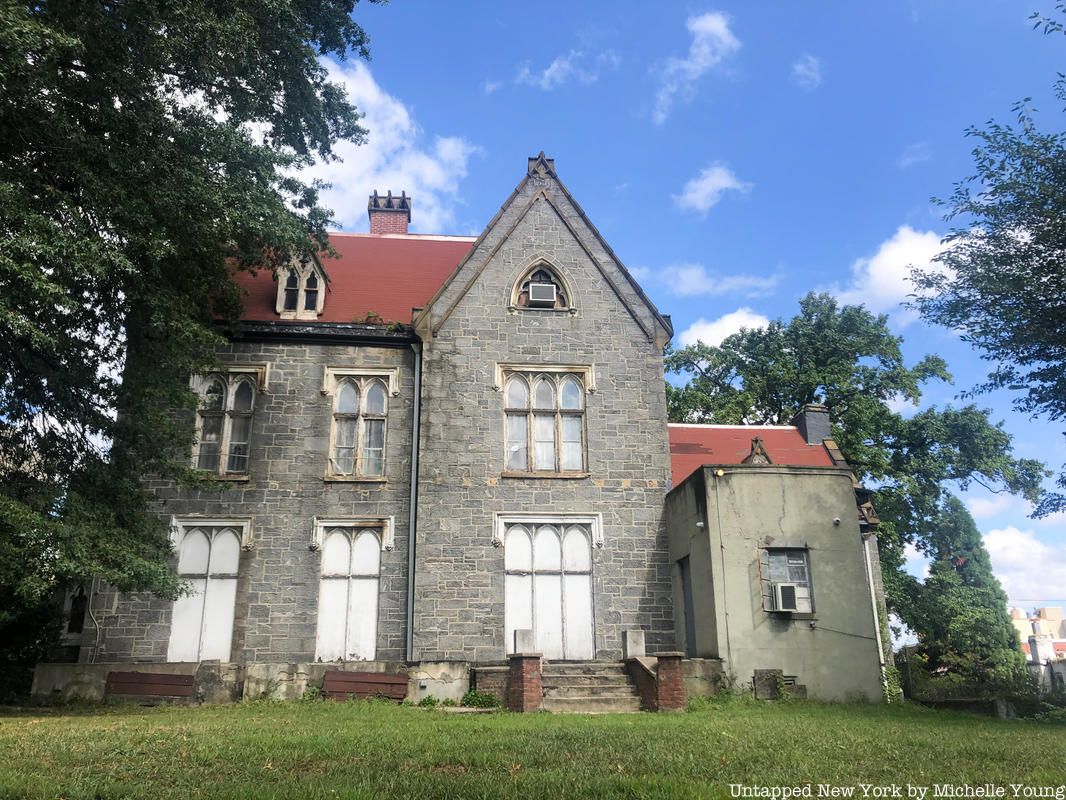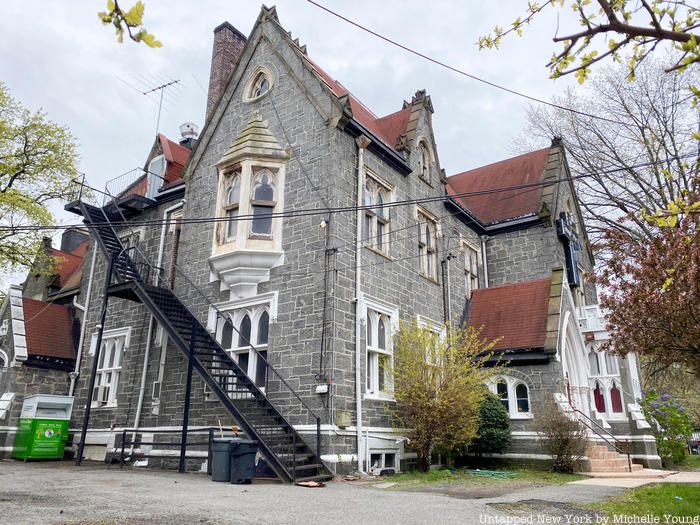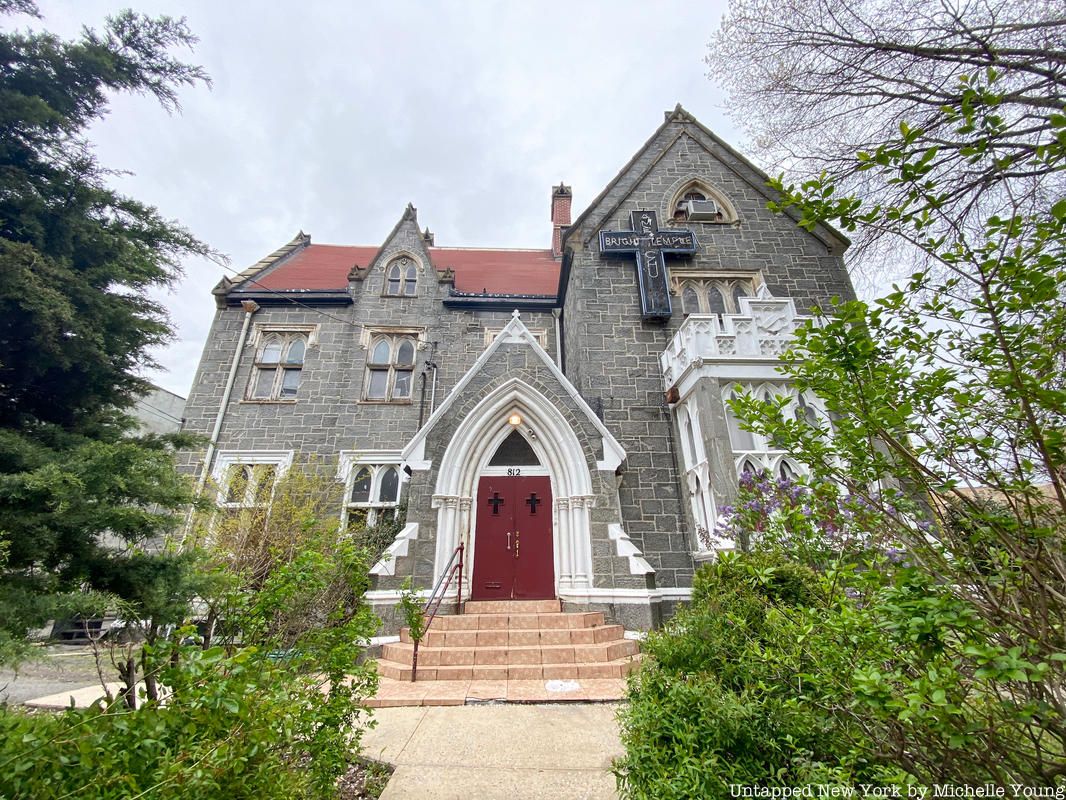Last Chance to Catch NYC's Holiday Notalgia Train
We met the voices of the NYC subway on our nostalgia ride this weekend!


Today, the Hunts Point peninsula in the Bronx is better known as one of New York City’s industrial hubs, focused predominantly on food distribution. It is home to the city’s produce market, the Fulton Fish Market, Anheuser-Busch, and more. However, this area of the Bronx was once the province of estates, manors and mansions, originally a rural part of Westchester county. Nearly everything from that era is gone, including a fifty acre estate and hundred room mansion, in what has become the Oak Point CSX freight rail yard.
But take a stroll west on Lafayette Avenue towards the Bronx River in a small residential patch that still exists in Hunts Point, and you will come across the last remnant of Hunts Point’s more gilded past. On the corner of Lafayette Avenue and Faille Street, a handsome graystone house sits on a grassy plot of land almost half an acre in size.

812 Faille Street is the current home of Bright Temple AME Church, an African Methodist Episcopalian church. The house was originally part of the nearly fifteen acre country estate, Sunnyslope, owned by Peter S. Hoe, whose brother Colonel Richard M. Hoe invented the rotary printing press. Richard had another estate just nearby called Brightside. Their father, Richard Hoe, came to the United States from England in 1803 and started a carpentry shop, Smith, Hoe & Company, that evolved into a printing press manufacturer. Richard Hoe introduced the cylinder press to the United States, and his son Richard M. Hoe invented both the double cylinder press and the rotary press. The company would later be renamed R. Hoe & Company.

This stately house, constructed between 1859 and 1864, is a New York City landmark and listed on the National Register for Historic Places. The architect is unknown, but on the New York City landmark designation report, the historian Anthony W. Robins writes that “it is in the manner of Calvert Vaux, the English-born associate of Andrew Jackson Downing and Frederick Law Olmsted. There is no known connection between the Hoe house and Vaux, but there is a great resemblance between Sunnyslope and several of the designs published in Vaux’s Villas and Cottages.” Robins calls the house “one of the finest surviving Gothic Revival houses in ·New York.”

Peter Hoe sold Sunnyside during the height of the Civil War in 1864 but it continued to be used as a country house until 1919, when it was sold to Temple Beth Elohim and used as a synagogue. Hunts Point once had a vibrant Jewish community, with over 200 synagogues in the South Bronx as of the 1930s. According to Lehman College Art Gallery/CUNY, the building’s upper floor was then used for WPA art classes during the Great Depression. It has also provided space for the girls’ program of nearby St. Ignatius School and the efforts of the church are mentioned in the book Amazing Grace: The Lives of Children and the Conscience of a Nation by Jonathan Kozol about children growing up in the South Bronx in the 1990s.

The numerous gabled roofs, the pointed Gothic style windows and entrances, and a projecting bay window show the level of care that was paid to the design and construction of the house. The Gothic style lended itself nicely into the building’s adaptive reuse in the last century as houses of worship. In recent years, the roof has been altered but it was once of slate in bands of horizontal stripes. A fire escape has been added as well, along with an extension in the back.
Bright Temple AME has been active as a food pantry and soup kitchen on Fridays, even during this pandemic. Its Facebook page has photographs of residents and staff at a food pantry event on April 17th.
Next, look inside the Fulton Fish Market, New York City’s bustling seafood distribution center nearby in Hunts Point.
Subscribe to our newsletter